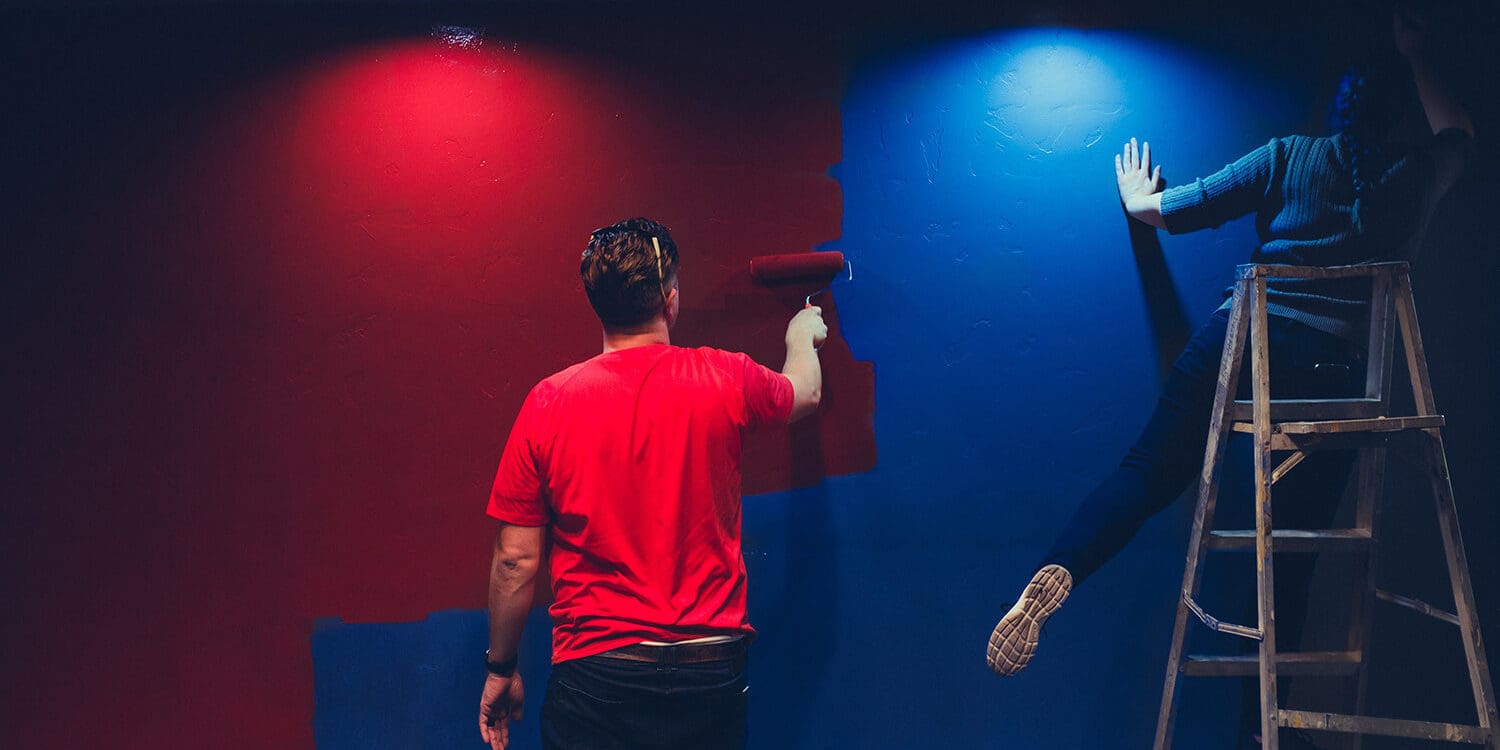When it comes to home décor, what’s on your walls can make all the difference. Whether that’s through making subtle changes with a neutral paint or wallpaper, or by using bold colours or striking wallpaper – it’s a relatively quick way to change up the feel of your home.
But if you’re thinking of redecorating your walls, it leaves you with the big question – should I use paint or wallpaper? Let’s take a look at the pros and cons, so you know exactly what needs to be taken into consideration.
Painting needs considerably less preparation time than wallpaper
The success of your redecorating often depends on the preparation. If you’re leaning towards hanging wallpaper, you’ll need patience and the right tools (or you could call in the professionals!) for the job. It’s thought that 75% of the job lies with properly prepping the walls, and the remaining 25% is for interior painting or hanging of wallpaper. Stripping off old wallpaper can be done using either chemicals or specific stripping tools – but either way, you need to be careful as it’s not uncommon for these tools to cause damage to the wall.
Alternatively, paint usually needs a lot less work in the way of preparation. If you’re painting over a damaged wall or a wall that’s previously been papered, you can cover any imperfections in spackle and let it dry, around 24 hours before you’re ready to paint.
You can also apply primer paint if you’re painting over a darker colour, as this will make the job much easier. It’s also really important that you ensure that any holes or rough patches have been properly spackled and dried – if they’ve not been fixed properly, applying the paint to the wall is likely to highlight it.
The room in question plays a role in your decision
Bathrooms and cloakrooms are popular rooms to revamp, as they’re often smaller and less expensive to decorate. However, you need to think about which room you’re looking to redecorate and factor this into your paint vs wallpaper decision. While modern wallpaper is fairly durable, it does tend to eventually peel in rooms that are prone to humidity – for example bathrooms and kitchens.
You can of course replace damaged sections of wallpaper, but it’s worth noting that it can be difficult to get a sufficient match, even if you have extra rolls from the same batch. More often than not, this is due to the wallpaper having faded due to the sunlight, or the patterns not completely matching up – and tends to result in the whole room needing to be redone.
If you’re thinking of decorating a high-traffic room, then it’s worth considering the fact that painted walls leave a little more wiggle room when it comes to cleaning the walls after any spillages or accidents – they’re easy to wipe down, or, in more extreme cases, repaint.
However, paint can chip easily and often needs a touch-up every once in a while. In rooms with high moisture levels, as we’ve already touched on, you can use waterproof paint to prevent damage. Generally speaking, a room should be repainted every 3-5 years, sometimes more frequently in high-traffic areas i.e. lounges, hallways, kitchen. That said, sometimes a downside can be the finish – it may be rough and less visually pleasing.
When it comes down to cost
More often than not, it’s cheaper to paint a room than it is to wallpaper it, but wallpaper tends to have a longer life-span – meaning that the costs tend to even out over time. But, that said, if you’re someone who likes to stay on-trend and redecorate every few years, then the longevity of the wall covering might not be a priority.
Ultimately, it’s true when they say that ‘you get what you pay for’ – if you choose to do the jo yourself with cheap paint or wallpaper then it’s unlikely to stand the test of time (that’s why we recommend getting the professionals in to take care of it!), and will need replacing on a regular basis.
Cheaper paint tends to have a lower opacity, and so if you’re leaning towards paint over wallpaper then it’s worth bearing in mind that you might need three coats rather than two coats of a better quality, more opaque paint. Ultimately, you’ll end up having to buy more, and the job ends up costing as much as it would for a professional to do their thing with a decent quality paint
In the same vein, cheap wallpaper is somewhat deceiving – it’s thin and more prone to damage. However, as we’ve already discussed, in some cases, wallpaper is the best option for covering uneven or damaged walls, especially if you don’t want to or can’t have them replastered and repaired. In these situations, it’s better to use a high-quality wallpaper – it’ll last longer, and conceal any flaws you might be worried about.
Ultimately, your decision should factor in your budget, the room you’re redecorating, and how often you’re prepared to redecorate (if you have children or pets, it’s likely to be more often!). Generally, a combination of paint and wallpaper offers the best and most creative finish, and can be done on a tighter budget.
Whichever you choose, the best results will always come from getting a professional in to do the job – as there’s nothing worse than squinty paint lines, and mismatched wallpaper patterns!








